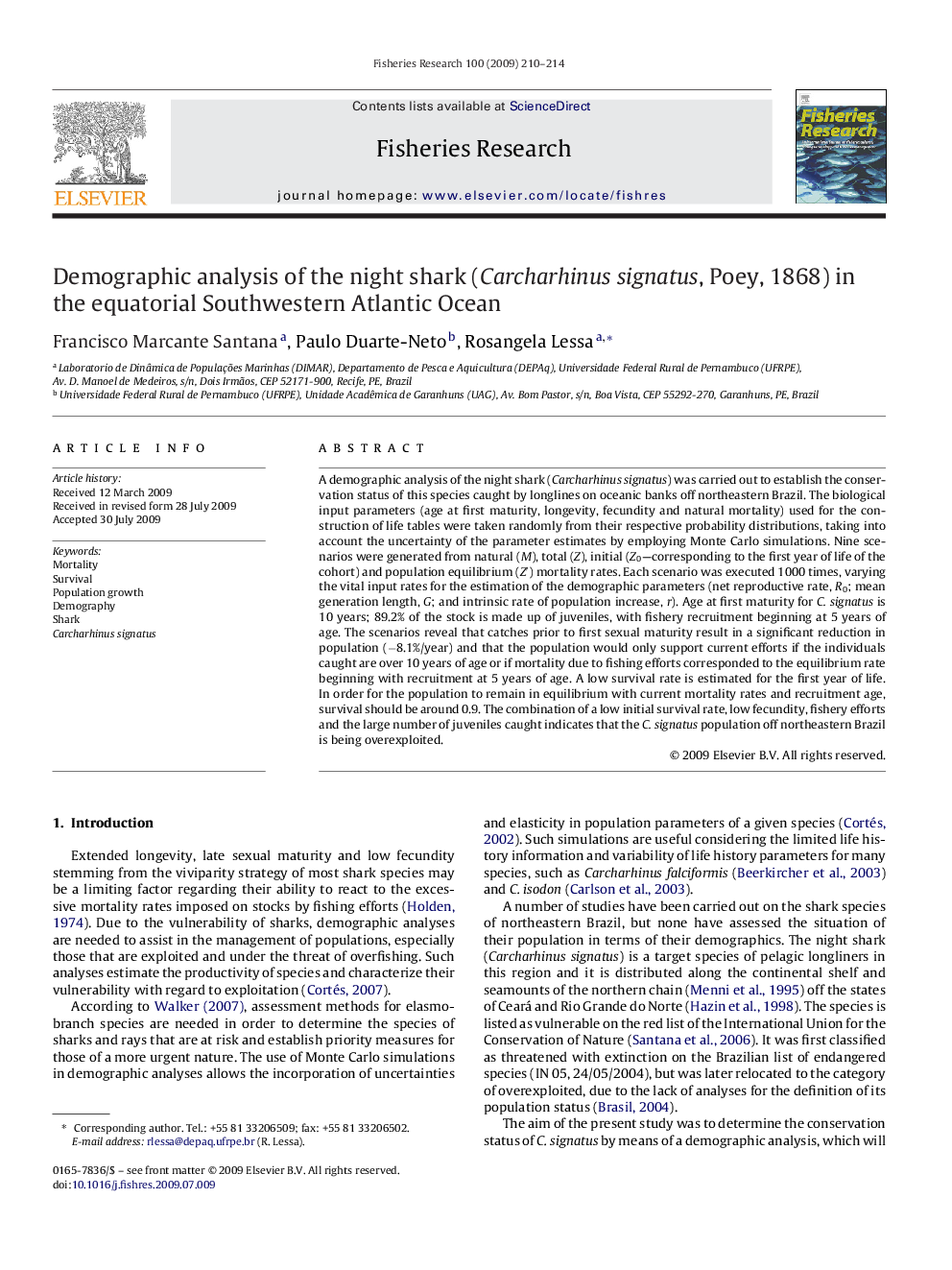| کد مقاله | کد نشریه | سال انتشار | مقاله انگلیسی | نسخه تمام متن |
|---|---|---|---|---|
| 4543807 | 1626853 | 2009 | 5 صفحه PDF | دانلود رایگان |

A demographic analysis of the night shark (Carcharhinus signatus) was carried out to establish the conservation status of this species caught by longlines on oceanic banks off northeastern Brazil. The biological input parameters (age at first maturity, longevity, fecundity and natural mortality) used for the construction of life tables were taken randomly from their respective probability distributions, taking into account the uncertainty of the parameter estimates by employing Monte Carlo simulations. Nine scenarios were generated from natural (M), total (Z), initial (Z0—corresponding to the first year of life of the cohort) and population equilibrium (Z′) mortality rates. Each scenario was executed 1000 times, varying the vital input rates for the estimation of the demographic parameters (net reproductive rate, R0; mean generation length, G; and intrinsic rate of population increase, r). Age at first maturity for C. signatus is 10 years; 89.2% of the stock is made up of juveniles, with fishery recruitment beginning at 5 years of age. The scenarios reveal that catches prior to first sexual maturity result in a significant reduction in population (−8.1%/year) and that the population would only support current efforts if the individuals caught are over 10 years of age or if mortality due to fishing efforts corresponded to the equilibrium rate beginning with recruitment at 5 years of age. A low survival rate is estimated for the first year of life. In order for the population to remain in equilibrium with current mortality rates and recruitment age, survival should be around 0.9. The combination of a low initial survival rate, low fecundity, fishery efforts and the large number of juveniles caught indicates that the C. signatus population off northeastern Brazil is being overexploited.
Journal: Fisheries Research - Volume 100, Issue 3, November 2009, Pages 210–214